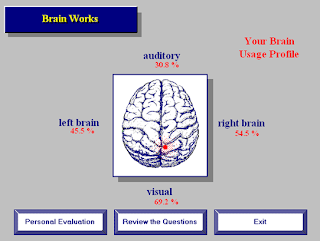 |
| Figure 1: Library Services |
"A man is known by the books he reads"
- Ralph Waldo Emerson
We live in an information society. Information is our basic resource and product. With the usage of internet technology traditional libraries incorporated information technology facility services like never before and focused on peoples satisfaction. Libraries value access to information as fundamental to education and research. Most of the people search information through the web rather than from a library. Searching the web is an easy way to get information and there is more and more information online everyday. Over the online resources people can search smartly for research papers, to find credible information and for discover new things. Many genuine resources are available over the web how ever general information on the web doesn't have proper reviewed so there is a high probability of misleading information. Some information on the web is not free but it accessible for students like myself to access through the facilities provided by some institutes such as APIIT Sri Lanka affiliated with Staffordshire University enables their students to access e-resource portals by paying a fairly amount of price. This will enable students to save their time required for search information since it provides some interface to search a particular resources in efficient manner rather than the open web where information on the web is not organized and comprehensive. Students and researches can use both the channels to gather knowledge but its better to use trusted online resources such as portal resources and library resources where there is responsible source of information.
Learning from Class:
Today the lecture was conducted by the Librarians (Ms. Yamani and Ms. Wathsala). The reason for this special lecturing session is to give an idea how to use available library resources effectively to student in order to do projects and assignments as well as to gather knowledge to expand their theoretical scope.
Related to APIIT Library services they mentioned different available resources such as electronic format articles, journals, ebooks and theses where the students can obtain them over the Athens portal and from APIIT internal network. An they highlighted most of the hard-copy format books that are relevant to student's modules and research requirements are available in the APIIT Library and further assistance can be obtain by library staff depending on the requirement of the student to find information that they are expecting have.
Before concluding the lecture for the day our lecturer stated that students have the facility to obtain their accessibility to Athens portal where it really helps almost all the students to carryout their studies and assignments without any lack of information. Lecture demonstrated Athens portal briefly and stated some recommended sites for obtain resources such as eBray, EBSCO, ScienceDirect, IEEE computer society and Emerald.
Reality of the lecture:
From this lecture I understood all the aspects of APIIT Library facilities they willing to offer us based on our request. Athens portal is some thing like an e-book library where that I can use those rich information as an foundation to my assignments as well as for my Final Project.
Home Work:
Steps in Conducting Academic Research
1. Determine your research topic/question
2. Understand the difference between primary and secondary research.
3. Determine your scope and time line
4. Write a research question
5. Learn how to find useful sources.
6. Collect some possible sources
7. Begin reading in detail
8. Find a method to take notes on what you read.
9. Continue to consider new sources.
10. Evaluate the sources you use.
11. Keep your research question in mind.
12. Write your tentative thesis.
13. Begin writing your first draft.
14. Begin to add quotes, paraphrases, or summaries into your writing.
15. Continue writing your first draft, and then revise it.
16. Prepare the final draft.
(Wikihow, 2012)
References:
Wikihow. (2012). Steps In Conducting an Effective Research. [Online] available at: http://www.wikihow.com/Conduct-Academic-Research [Accessed 31st July 2012]














